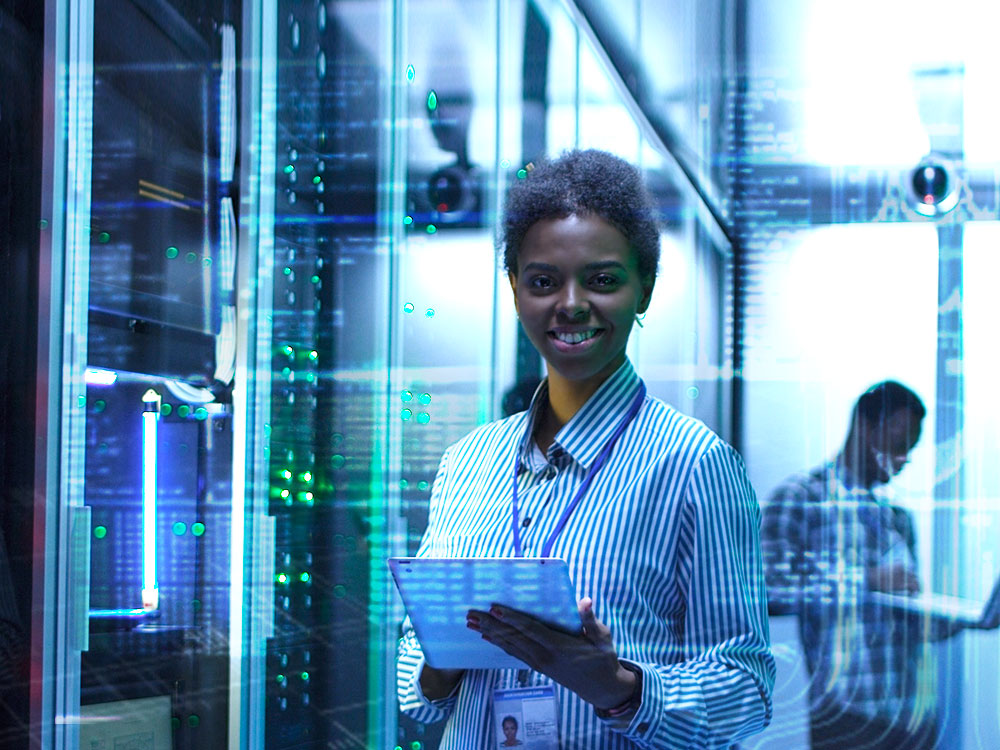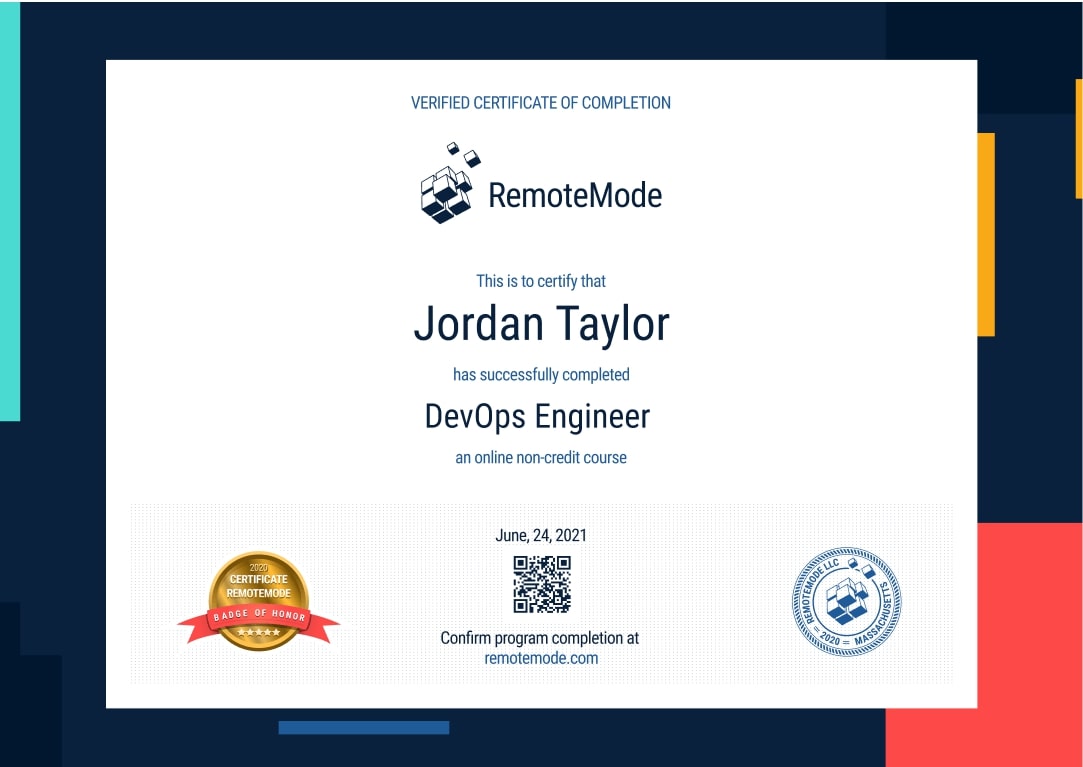Become a DevOps Engineer
Combine traditional IT with its servers, connections, fiber optic, etc., and modern technology like cloud, mobile apps, and iPhones. Launch the software and close the gap between software development and operations. Today DevOps is the newest and up-to-date direction in the IT labor market.
- 4 month
- 123 lessons
- 5 hours per week
- 86 hours



DevOps Engineer Mission Forecast
Landing Zone
With the expansion of the IT sphere, the demand for the DevOps of Engineers is steadily increasing. Lots of new platforms, services and tools are entering the market, and companies are headhunting the specialists who can organize and support these processes. Some biggest and world-known companies like IBM, Microsoft, and Cisco open more than 43,000 positions for DevOps Engineers. The demand is going to show a 24% increase by 2026.
Mission Objective (Who’s Hiring Right Now)
DevOps Engineer Overview
The implementation of the DevOps model for management and software development is expanding and shows stable growth during the last 5 years. Industry leaders all over the world, from NASA to Target, and Hertz to Netflix hire DevOps Engineers to run their systems.
- + 4 Month Courses
- + 5 Hours/Week Self-study
- + 123 On-demand Lessons
- + 86 Hours of training materials
- + Certificate
- + Practise on Topical Real-life Project
- Integrate siloed pieces of software engineering.
- Write script codes to customize and patch software.
- Control the work of software applications.
- Upgrade the security system for end-users of the software.
- Link code, databases, and software to function effectively.
- Keep documents of digital software projects.
Be ready for Liftoff
Chef
This course tackles all the pertinent technical knowledge needed to handle the configuration management tool, Chef.
About the Course
The course discusses how Chef uses a pure-Ruby DSL for what are called "recipes" and its primary purpose of rendering the task of configuring and maintaining company servers with greater efficiency.
The course aims at educating interested professionals wanting to expand their software development and networking specialization into Chef.
Who this Course is for?
This course was created for professionals wanting to learn Chef, especially those who are holding an IT position within a company as the body of technical knowledge allows for these professionals to administer solutions for small and large-scale systems.
Prerequisites
It is recommendable for the professional wanting to take this course on Chef to have the following credentials:
- A Bachelor's Degree in Computer Science, Information Technology, or equivalent
- A year's worth of experience working as an IT professional
Chef Overview
Chef, part 1 of 6: Intro and Setup
This lesson serves as an overview of the entire course. This introduces learners to the basics of the automation platform called Chef. The learners would be made to understand that this platform functions to transform infrastructure into code. With Chef, all operations such as configuration, deployment, and management across networks are all automated, regardless of size.
This lesson discusses the relationship among the elements of Chef which includes nodes, the server, and workstations, its three main components.
Chef, part 2 of 6: Chef Client and Ohai
This lesson details the relationship between the Ohai tool and the Chef Client. The discussion details what the Ohai tool is: a tool used for the detection of attributes on a node. Ohai provides the attributes to the chef-client when it starts to run. The learners would be made to understand that the tool is a requirement of the client and should be there on a node.
The Ohai collects the following attributes:
- CPU data
- Fully qualified domain names
- Host names
- Kernel data
- Memory usage
- Network usage
- Platform details
- Along with other configuration details
Chef, part 3 of 6: Templates and Resources
This lesson discusses the template resource block endemic to Chef. The participants are to learn that this template is responsible for declaring the location wherein a file would be created, the source template for creating the file, and the permissions to access the file.
Chef, part 4 of 6: Chef Server and Supermarket
This lesson discusses the specifics about the Chef Server and the Supermarket. The latter is discussed in full, as the learners would find out that the Chef Supermarket pertains to the community cookbooks website. The discussion goes into the specifics of how the Chef Supermarket is used.
Chef, part 5 of 6: Managing Nodes and Roles
This lesson goes into the details of what Nodes and Roles are and how these are used and managed.
This discussion would define nodes as any machine that may be physical or virtual that is being managed by Chef.
Roles are defined as the category in Chef that describes the function that a machine should be performing, its responsibilities, and the software and settings that it should be delegated with.
Chef, part 6 of 6: Environments and Data Bags
This lesson details the environment and the Data Bags that can be loaded by a cookbook.
In the discussion, Chef Data Bags pertain to a collection of data that is arbitrary and can be used with cookbooks. The learners would be made to understand that the Data Bags are wholly helpful when one prefers not to use attributes considered hardcore in recipes.

Mission Control
- Study on course with mentor support
- Take part in Virtual Lab projects to upgrade your portfolio
- See your results in the Dashboard and win the competitions with others students
- Control the progress of study using Activity Tracking Log
- Take a step closer to your job of dream with interview prep and upgrading SV
In partnership with
Set your trajectory (123 video 40 hours)
Certificate of Completion
- Certification recognized by industry companies
- Real project from virtual labs
- The program built on 100% self-study
- Course videos and subtitles
- Practical quizzes
- Mentored by high-class specialists

Grow into a DevOps Engineer
Combine traditional IT with its servers, connections, fiber optic, etc., and modern technology like cloud, mobile apps, and iPhones. Launch the software and close the gap between software development and operations. Today DevOps is the newest and up-to-date direction in the IT labor market.
Learning program
- 4 months duration, 5 hours per week
- 123 lessons, 86 hours
- 100 % flexible timetable
Virtual lab
- Real projects
- GitHub portfolio
- Experts feedback
Career Services
- Interview prep
- SV writing
- Filling LinkedIn profile
Request More Information
View pricing and financing options